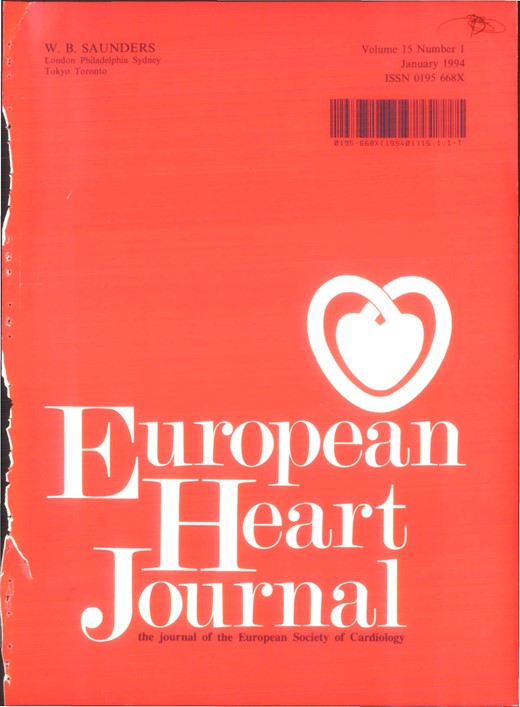-
Views
-
Cite
Cite
A. COHEN-SOLAL, J. F. AUPETIT, M. DAHAN, S. BALEYNAUD, M. SLAMA, R. GOURGON, Peak oxygen uptake during exercise in mitral stenosis with sinus rhythm or atrial fibrillation: lack of correlation with valve area: A study in 70 patients, European Heart Journal, Volume 15, Issue 1, January 1994, Pages 37–44, https://doi.org/10.1093/oxfordjournals.eurheartj.a060377
Close - Share Icon Share
Abstract
Although the haemodynamic response during submaximal supine exercise in mitral stenosis has been well described, the determinants of peak oxygen uptake during maximal upright exercise are poorly characterized and may differ in sinus rhythm and atrial fibrillation. Seventy patients with isolated mitral stenosis underwent Doppler-echocardiography and bicycle exercise with respiratory gas analysis. Forty-two patients were in sinus rhythm (Group I) and 28 in atrial fibrillation (Group II). Peak oxygen uptake it was 21·3±5·6 ml. min−1 kg−1 in group I and 18·1 ± 5·1 ml min−1 kg−1 in group II (P<0·05). There was no significant correlation between indices of exercise tolerance (exercise duration, ventilatory threshold, peak oxygen uptake, indexed peak oxygen uptake, peak oxygen pulse) and valve area or gradient in either group. Indexed peak oxygen uptake was not correlated to δ oxygen pulse but was linearly related (r=0·43) to δ heart rate (δ heart rate =peak heart rate=rest heart rate) in Group I but not in Group II. Thus, in patients with mitral stenosis, no correlation was found between the mitral valve area or the gradient at rest and maximal upright exercise tolerance, suggesting that peripheral adaptation and, in sinus rhythm, chronotropic reserve, are important compensatory mechanisms.





